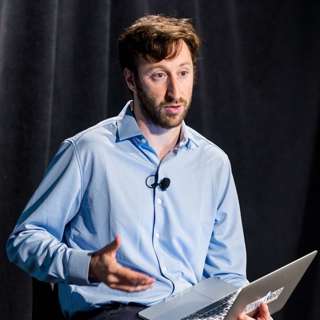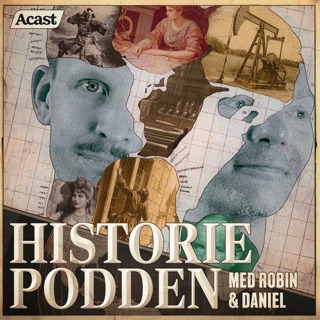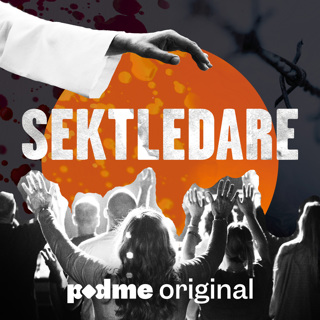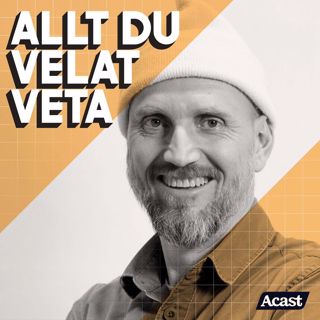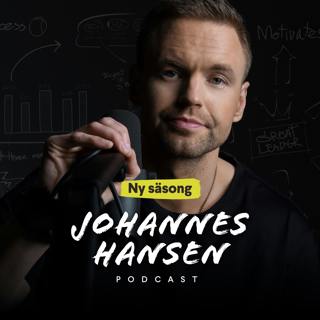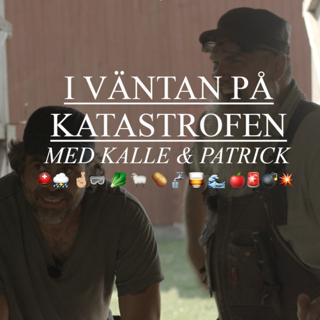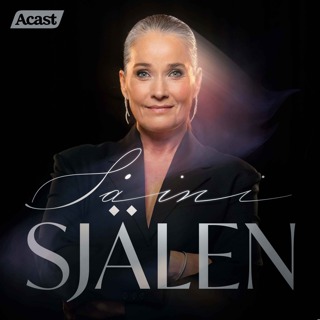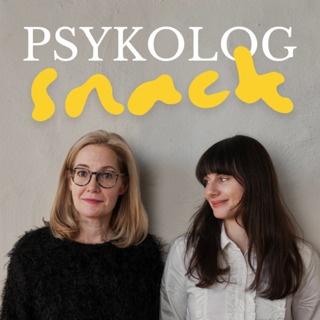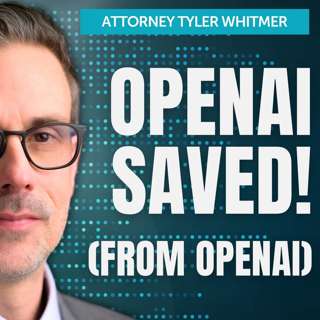
OpenAI: The nonprofit refuses to be killed (with Tyler Whitmer)
Last December, the OpenAI business put forward a plan to completely sideline its nonprofit board. But two state attorneys general have now blocked that effort and kept that board very much alive and kicking.The for-profit’s trouble was that the entire operation was founded on the premise of — and legally pledged to — the purpose of ensuring that “artificial general intelligence benefits all of humanity.” So to get its restructure past regulators, the business entity has had to agree to 20 serious requirements designed to ensure it continues to serve that goal.Attorney Tyler Whitmer, as part of his work with Legal Advocates for Safe Science and Technology, has been a vocal critic of OpenAI’s original restructure plan. In today’s conversation, he lays out all the changes and whether they will ultimately matter.Full transcript, video, and links to learn more: https://80k.info/tw2 After months of public pressure and scrutiny from the attorneys general (AGs) of California and Delaware, the December proposal itself was sidelined — and what replaced it is far more complex and goes a fair way towards protecting the original mission:The nonprofit’s charitable purpose — “ensure that artificial general intelligence benefits all of humanity” — now legally controls all safety and security decisions at the company. The four people appointed to the new Safety and Security Committee can block model releases worth tens of billions.The AGs retain ongoing oversight, meeting quarterly with staff and requiring advance notice of any changes that might undermine their authority.OpenAI’s original charter, including the remarkable “stop and assist” commitment, remains binding.But significant concessions were made. The nonprofit lost exclusive control of AGI once developed — Microsoft can commercialise it through 2032. And transforming from complete control to this hybrid model represents, as Tyler puts it, “a bad deal compared to what OpenAI should have been.”The real question now: will the Safety and Security Committee use its powers? It currently has four part-time volunteer members and no permanent staff, yet they’re expected to oversee a company racing to build AGI while managing commercial pressures in the hundreds of billions.Tyler calls on OpenAI to prove they’re serious about following the agreement:Hire management for the SSC.Add more independent directors with AI safety expertise.Maximise transparency about mission compliance."There’s a real opportunity for this to go well. A lot … depends on the boards, so I really hope that they … step into this role … and do a great job. … I will hope for the best and prepare for the worst, and stay vigilant throughout."Chapters:We’re hiring (00:00:00)Cold open (00:00:40)Tyler Whitmer is back to explain the latest OpenAI developments (00:01:46)The original radical plan (00:02:39)What the AGs forced on the for-profit (00:05:47)Scrappy resistance probably worked (00:37:24)The Safety and Security Committee has teeth — will it use them? (00:41:48)Overall, is this a good deal or a bad deal? (00:52:06)The nonprofit and PBC boards are almost the same. Is that good or bad or what? (01:13:29)Board members’ “independence” (01:19:40)Could the deal still be challenged? (01:25:32)Will the deal satisfy OpenAI investors? (01:31:41)The SSC and philanthropy need serious staff (01:33:13)Outside advocacy on this issue, and the impact of LASST (01:38:09)What to track to tell if it's working out (01:44:28)This episode was recorded on November 4, 2025.Video editing: Milo McGuire, Dominic Armstrong, and Simon MonsourAudio engineering: Milo McGuire, Simon Monsour, and Dominic ArmstrongMusic: CORBITCoordination, transcriptions, and web: Katy Moore
11 Nov 1h 56min
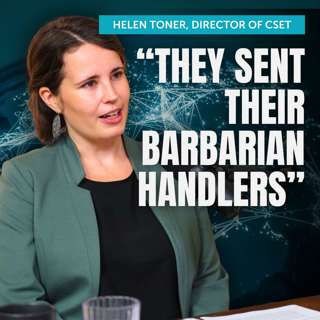
#227 – Helen Toner on the geopolitics of AGI in China and the Middle East
With the US racing to develop AGI and superintelligence ahead of China, you might expect the two countries to be negotiating how they’ll deploy AI, including in the military, without coming to blows. But according to Helen Toner, director of the Center for Security and Emerging Technology in DC, “the US and Chinese governments are barely talking at all.”Links to learn more, video, and full transcript: https://80k.info/ht25In her role as a founder, and now leader, of DC’s top think tank focused on the geopolitical and military implications of AI, Helen has been closely tracking the US’s AI diplomacy since 2019.“Over the last couple of years there have been some direct [US–China] talks on some small number of issues, but they’ve also often been completely suspended.” China knows the US wants to talk more, so “that becomes a bargaining chip for China to say, ‘We don’t want to talk to you. We’re not going to do these military-to-military talks about extremely sensitive, important issues, because we’re mad.'”Helen isn’t sure the groundwork exists for productive dialogue in any case. “At the government level, [there’s] very little agreement” on what AGI is, whether it’s possible soon, whether it poses major risks. Without shared understanding of the problem, negotiating solutions is very difficult.Another issue is that so far the Chinese Communist Party doesn’t seem especially “AGI-pilled.” While a few Chinese companies like DeepSeek are betting on scaling, she sees little evidence Chinese leadership shares Silicon Valley’s conviction that AGI will arrive any minute now, and export controls have made it very difficult for them to access compute to match US competitors.When DeepSeek released R1 just three months after OpenAI’s o1, observers declared the US–China gap on AI had all but disappeared. But Helen notes OpenAI has since scaled to o3 and o4, with nothing to match on the Chinese side. “We’re now at something like a nine-month gap, and that might be longer.”To find a properly AGI-pilled autocracy, we might need to look at nominal US allies. The US has approved massive data centres in the UAE and Saudi Arabia with “hundreds of thousands of next-generation Nvidia chips” — delivering colossal levels of computing power.When OpenAI announced this deal with the UAE, they celebrated that it was “rooted in democratic values,” and would advance “democratic AI rails” and provide “a clear alternative to authoritarian versions of AI.”But the UAE scores 18 out of 100 on Freedom House’s democracy index. “This is really not a country that respects rule of law,” Helen observes. Political parties are banned, elections are fake, dissidents are persecuted.If AI access really determines future national power, handing world-class supercomputers to Gulf autocracies seems pretty questionable. The justification is typically that “if we don’t sell it, China will” — a transparently false claim, given severe Chinese production constraints. It also raises eyebrows that Gulf countries conduct joint military exercises with China and their rulers have “very tight personal and commercial relationships with Chinese political leaders and business leaders.”In today’s episode, host Rob Wiblin and Helen discuss all that and more.This episode was recorded on September 25, 2025.CSET is hiring a frontier AI research fellow! https://80k.info/cset-roleCheck out its careers page for current roles: https://cset.georgetown.edu/careers/Chapters:Cold open (00:00:00)Who’s Helen Toner? (00:01:02)Helen’s role on the OpenAI board, and what happened with Sam Altman (00:01:31)The Center for Security and Emerging Technology (CSET) (00:07:35)CSET’s role in export controls against China (00:10:43)Does it matter if the world uses US AI models? (00:21:24)Is China actually racing to build AGI? (00:27:10)Could China easily steal AI model weights from US companies? (00:38:14)The next big thing is probably robotics (00:46:42)Why is the Trump administration sabotaging the US high-tech sector? (00:48:17)Are data centres in the UAE “good for democracy”? (00:51:31)Will AI inevitably concentrate power? (01:06:20)“Adaptation buffers” vs non-proliferation (01:28:16)Will the military use AI for decision-making? (01:36:09)“Alignment” is (usually) a terrible term (01:42:51)Is Congress starting to take superintelligence seriously? (01:45:19)AI progress isn't actually slowing down (01:47:44)What's legit vs not about OpenAI’s restructure (01:55:28)Is Helen unusually “normal”? (01:58:57)How to keep up with rapid changes in AI and geopolitics (02:02:42)What CSET can uniquely add to the DC policy world (02:05:51)Talent bottlenecks in DC (02:13:26)What evidence, if any, could settle how worried we should be about AI risk? (02:16:28)Is CSET hiring? (02:18:22)Video editing: Luke Monsour and Simon MonsourAudio engineering: Milo McGuire, Simon Monsour, and Dominic ArmstrongMusic: CORBITCoordination, transcriptions, and web: Katy Moore
5 Nov 2h 20min

#226 – Holden Karnofsky on unexploited opportunities to make AI safer — and all his AGI takes
For years, working on AI safety usually meant theorising about the ‘alignment problem’ or trying to convince other people to give a damn. If you could find any way to help, the work was frustrating and low feedback.According to Anthropic’s Holden Karnofsky, this situation has now reversed completely.There are now large amounts of useful, concrete, shovel-ready projects with clear goals and deliverables. Holden thinks people haven’t appreciated the scale of the shift, and wants everyone to see the large range of ‘well-scoped object-level work’ they could personally help with, in both technical and non-technical areas.Video, full transcript, and links to learn more: https://80k.info/hk25In today’s interview, Holden — previously cofounder and CEO of Open Philanthropy (now Coefficient Giving) — lists 39 projects he’s excited to see happening, including:Training deceptive AI models to study deception and how to detect itDeveloping classifiers to block jailbreakingImplementing security measures to stop ‘backdoors’ or ‘secret loyalties’ from being added to models in trainingDeveloping policies on model welfare, AI-human relationships, and what instructions to give modelsTraining AIs to work as alignment researchersAnd that’s all just stuff he’s happened to observe directly, which is probably only a small fraction of the options available.Holden makes a case that, for many people, working at an AI company like Anthropic will be the best way to steer AGI in a positive direction. He notes there are “ways that you can reduce AI risk that you can only do if you’re a competitive frontier AI company.” At the same time, he believes external groups have their own advantages and can be equally impactful.Critics worry that Anthropic’s efforts to stay at that frontier encourage competitive racing towards AGI — significantly or entirely offsetting any useful research they do. Holden thinks this seriously misunderstands the strategic situation we’re in — and explains his case in detail with host Rob Wiblin.Chapters:Cold open (00:00:00)Holden is back! (00:02:26)An AI Chernobyl we never notice (00:02:56)Is rogue AI takeover easy or hard? (00:07:32)The AGI race isn't a coordination failure (00:17:48)What Holden now does at Anthropic (00:28:04)The case for working at Anthropic (00:30:08)Is Anthropic doing enough? (00:40:45)Can we trust Anthropic, or any AI company? (00:43:40)How can Anthropic compete while paying the “safety tax”? (00:49:14)What, if anything, could prompt Anthropic to halt development of AGI? (00:56:11)Holden's retrospective on responsible scaling policies (00:59:01)Overrated work (01:14:27)Concrete shovel-ready projects Holden is excited about (01:16:37)Great things to do in technical AI safety (01:20:48)Great things to do on AI welfare and AI relationships (01:28:18)Great things to do in biosecurity and pandemic preparedness (01:35:11)How to choose where to work (01:35:57)Overrated AI risk: Cyberattacks (01:41:56)Overrated AI risk: Persuasion (01:51:37)Why AI R&D is the main thing to worry about (01:55:36)The case that AI-enabled R&D wouldn't speed things up much (02:07:15)AI-enabled human power grabs (02:11:10)Main benefits of getting AGI right (02:23:07)The world is handling AGI about as badly as possible (02:29:07)Learning from targeting companies for public criticism in farm animal welfare (02:31:39)Will Anthropic actually make any difference? (02:40:51)“Misaligned” vs “misaligned and power-seeking” (02:55:12)Success without dignity: how we could win despite being stupid (03:00:58)Holden sees less dignity but has more hope (03:08:30)Should we expect misaligned power-seeking by default? (03:15:58)Will reinforcement learning make everything worse? (03:23:45)Should we push for marginal improvements or big paradigm shifts? (03:28:58)Should safety-focused people cluster or spread out? (03:31:35)Is Anthropic vocal enough about strong regulation? (03:35:56)Is Holden biased because of his financial stake in Anthropic? (03:39:26)Have we learned clever governance structures don't work? (03:43:51)Is Holden scared of AI bioweapons? (03:46:12)Holden thinks AI companions are bad news (03:49:47)Are AI companies too hawkish on China? (03:56:39)The frontier of infosec: confidentiality vs integrity (04:00:51)How often does AI work backfire? (04:03:38)Is AI clearly more impactful to work in? (04:18:26)What's the role of earning to give? (04:24:54)This episode was recorded on July 25 and 28, 2025.Video editing: Simon Monsour, Luke Monsour, Dominic Armstrong, and Milo McGuireAudio engineering: Milo McGuire, Simon Monsour, and Dominic ArmstrongMusic: CORBITCoordination, transcriptions, and web: Katy Moore
30 Okt 4h 30min
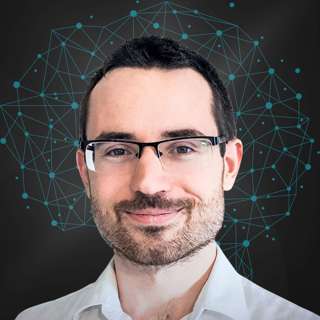
#225 – Daniel Kokotajlo on what a hyperspeed robot economy might look like
When Daniel Kokotajlo talks to security experts at major AI labs, they tell him something chilling: “Of course we’re probably penetrated by the CCP already, and if they really wanted something, they could take it.”This isn’t paranoid speculation. It’s the working assumption of people whose job is to protect frontier AI models worth billions of dollars. And they’re not even trying that hard to stop it — because the security measures that might actually work would slow them down in the race against competitors.Full transcript, highlights, and links to learn more: https://80k.info/dkDaniel is the founder of the AI Futures Project and author of AI 2027, a detailed scenario showing how we might get from today’s AI systems to superintelligence by the end of the decade. Over a million people read it in the first few weeks, including US Vice President JD Vance. When Daniel talks to researchers at Anthropic, OpenAI, and DeepMind, they tell him the scenario feels less wild to them than to the general public — because many of them expect something like this to happen.Daniel’s median timeline? 2029. But he’s genuinely uncertain, putting 10–20% probability on AI progress hitting a long plateau.When he first published AI 2027, his median forecast for when superintelligence would arrive was 2027, rather than 2029. So what shifted his timelines recently? Partly a fascinating study from METR showing that AI coding assistants might actually be making experienced programmers slower — even though the programmers themselves think they’re being sped up. The study suggests a systematic bias toward overestimating AI effectiveness — which, ironically, is good news for timelines, because it means we have more breathing room than the hype suggests.But Daniel is also closely tracking another METR result: AI systems can now reliably complete coding tasks that take humans about an hour. That capability has been doubling every six months in a remarkably straight line. Extrapolate a couple more years and you get systems completing month-long tasks. At that point, Daniel thinks we’re probably looking at genuine AI research automation — which could cause the whole process to accelerate dramatically.At some point, superintelligent AI will be limited by its inability to directly affect the physical world. That’s when Daniel thinks superintelligent systems will pour resources into robotics, creating a robot economy in months.Daniel paints a vivid picture: imagine transforming all car factories (which have similar components to robots) into robot production factories — much like historical wartime efforts to redirect production of domestic goods to military goods. Then imagine the frontier robots of today hooked up to a data centre running superintelligences controlling the robots’ movements to weld, screw, and build. Or an intermediate step might even be unskilled human workers coached through construction tasks by superintelligences via their phones.There’s no reason that an effort like this isn’t possible in principle. And there would be enormous pressure to go this direction: whoever builds a superintelligence-powered robot economy first will get unheard-of economic and military advantages.From there, Daniel expects the default trajectory to lead to AI takeover and human extinction — not because superintelligent AI will hate humans, but because it can better pursue its goals without us.But Daniel has a better future in mind — one he puts roughly 25–30% odds that humanity will achieve. This future involves international coordination and hardware verification systems to enforce AI development agreements, plus democratic processes for deciding what values superintelligent AIs should have — because in a world with just a handful of superintelligent AI systems, those few minds will effectively control everything: the robot armies, the information people see, the shape of civilisation itself.Right now, nobody knows how to specify what values those minds will have. We haven’t solved alignment. And we might only have a few more years to figure it out.Daniel and host Luisa Rodriguez dive deep into these stakes in today’s interview.What did you think of the episode? https://forms.gle/HRBhjDZ9gfM8woG5AThis episode was recorded on September 9, 2025.Chapters:Cold open (00:00:00)Who’s Daniel Kokotajlo? (00:00:37)Video: We’re Not Ready for Superintelligence (00:01:31)Interview begins: Could China really steal frontier model weights? (00:36:26)Why we might get a robot economy incredibly fast (00:42:34)AI 2027’s alternate ending: The slowdown (01:01:29)How to get to even better outcomes (01:07:18)Updates Daniel’s made since publishing AI 2027 (01:15:13)How plausible are longer timelines? (01:20:22)What empirical evidence is Daniel looking out for to decide which way things are going? (01:40:27)What post-AGI looks like (01:49:41)Whistleblower protections and Daniel’s unsigned NDA (02:04:28)Audio engineering: Milo McGuire, Simon Monsour, and Dominic ArmstrongMusic: CORBITCoordination, transcriptions, and web: Katy Moore
27 Okt 2h 12min

#224 – There's a cheap and low-tech way to save humanity from any engineered disease | Andrew Snyder-Beattie
Conventional wisdom is that safeguarding humanity from the worst biological risks — microbes optimised to kill as many as possible — is difficult bordering on impossible, making bioweapons humanity’s single greatest vulnerability. Andrew Snyder-Beattie thinks conventional wisdom could be wrong.Andrew’s job at Open Philanthropy is to spend hundreds of millions of dollars to protect as much of humanity as possible in the worst-case scenarios — those with fatality rates near 100% and the collapse of technological civilisation a live possibility.Video, full transcript, and links to learn more: https://80k.info/asbAs Andrew lays out, there are several ways this could happen, including:A national bioweapons programme gone wrong, in particular Russia or North KoreaAI advances making it easier for terrorists or a rogue AI to release highly engineered pathogensMirror bacteria that can evade the immune systems of not only humans, but many animals and potentially plants as wellMost efforts to combat these extreme biorisks have focused on either prevention or new high-tech countermeasures. But prevention may well fail, and high-tech approaches can’t scale to protect billions when, with no sane people willing to leave their home, we’re just weeks from economic collapse.So Andrew and his biosecurity research team at Open Philanthropy have been seeking an alternative approach. They’re proposing a four-stage plan using simple technology that could save most people, and is cheap enough it can be prepared without government support. Andrew is hiring for a range of roles to make it happen — from manufacturing and logistics experts to global health specialists to policymakers and other ambitious entrepreneurs — as well as programme associates to join Open Philanthropy’s biosecurity team (apply by October 20!).Fundamentally, organisms so small have no way to penetrate physical barriers or shield themselves from UV, heat, or chemical poisons. We now know how to make highly effective ‘elastomeric’ face masks that cost $10, can sit in storage for 20 years, and can be used for six months straight without changing the filter. Any rich country could trivially stockpile enough to cover all essential workers.People can’t wear masks 24/7, but fortunately propylene glycol — already found in vapes and smoke machines — is astonishingly good at killing microbes in the air. And, being a common chemical input, industry already produces enough of the stuff to cover every indoor space we need at all times.Add to this the wastewater monitoring and metagenomic sequencing that will detect the most dangerous pathogens before they have a chance to wreak havoc, and we might just buy ourselves enough time to develop the cure we’ll need to come out alive.Has everyone been wrong, and biology is actually defence dominant rather than offence dominant? Is this plan crazy — or so crazy it just might work?That’s what host Rob Wiblin and Andrew Snyder-Beattie explore in this in-depth conversation.What did you think of the episode? https://forms.gle/66Hw5spgnV3eVWXa6Chapters:Cold open (00:00:00)Who's Andrew Snyder-Beattie? (00:01:23)It could get really bad (00:01:57)The worst-case scenario: mirror bacteria (00:08:58)To actually work, a solution has to be low-tech (00:17:40)Why ASB works on biorisks rather than AI (00:20:37)Plan A is prevention. But it might not work. (00:24:48)The “four pillars” plan (00:30:36)ASB is hiring now to make this happen (00:32:22)Everyone was wrong: biorisks are defence dominant in the limit (00:34:22)Pillar 1: A wall between the virus and your lungs (00:39:33)Pillar 2: Biohardening buildings (00:54:57)Pillar 3: Immediately detecting the pandemic (01:13:57)Pillar 4: A cure (01:27:14)The plan's biggest weaknesses (01:38:35)If it's so good, why are you the only group to suggest it? (01:43:04)Would chaos and conflict make this impossible to pull off? (01:45:08)Would rogue AI make bioweapons? Would other AIs save us? (01:50:05)We can feed the world even if all the plants die (01:56:08)Could a bioweapon make the Earth uninhabitable? (02:05:06)Many open roles to solve bio-extinction — and you don’t necessarily need a biology background (02:07:34)Career mistakes ASB thinks are common (02:16:19)How to protect yourself and your family (02:28:21)This episode was recorded on August 12, 2025Video editing: Simon Monsour and Luke MonsourAudio engineering: Milo McGuire, Simon Monsour, and Dominic ArmstrongMusic: CORBITCamera operator: Jake MorrisCoordination, transcriptions, and web: Katy Moore
2 Okt 2h 31min
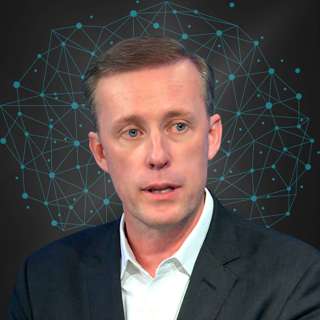
Inside the Biden admin’s AI policy approach | Jake Sullivan, Biden’s NSA | via The Cognitive Revolution
Jake Sullivan was the US National Security Advisor from 2021-2025. He joined our friends on The Cognitive Revolution podcast in August to discuss AI as a critical national security issue. We thought it was such a good interview and we wanted more people to see it, so we’re cross-posting it here on The 80,000 Hours Podcast.Jake and host Nathan Labenz discuss:Jake’s four-category framework to think about AI risks and opportunities: security, economics, society, and existential.Why Jake advocates for "managed competition" with China — where the US and China "compete like hell" while maintaining sufficient guardrails to prevent conflict.Why Jake thinks competition is a "chronic condition" of the US-China relationship that cannot be solved with “grand bargains.”How current conflicts are providing "glimpses of the future" with lessons about scale, attritability, and the potential for autonomous weapons as AI gets integrated into modern warfare.Why Jake worries that Pentagon bureaucracy prevents rapid AI adoption while China's People’s Liberation Army may be better positioned to integrate AI capabilities.And why we desperately need private sector leadership: AI is "the first technology with such profound national security applications that the government really had very little to do with."Check out more of Nathan’s interviews on The Cognitive Revolution YouTube channel: https://www.youtube.com/@CognitiveRevolutionPodcastWhat did you think of the episode? https://forms.gle/g7cj6TkR9xmxZtCZ9Originally produced by: https://aipodcast.ingThis edit by: Simon Monsour, Dominic Armstrong, and Milo McGuire | 80,000 HoursChapters:Cold open (00:00:00)Luisa's intro (00:01:06)Jake’s AI worldview (00:02:08)What Washington gets — and doesn’t — about AI (00:04:43)Concrete AI opportunities (00:10:53)Trump’s AI Action Plan (00:19:36)Middle East AI deals (00:23:26)Is China really a threat? (00:28:52)Export controls strategy (00:35:55)Managing great power competition (00:54:51)AI in modern warfare (01:01:47)Economic impacts in people’s daily lives (01:04:13)
26 Sep 1h 5min
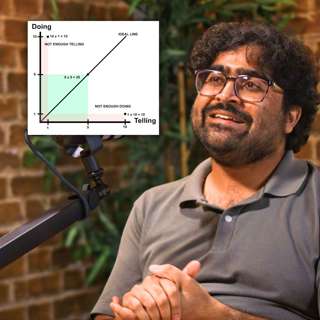
#223 – Neel Nanda on leading a Google DeepMind team at 26 – and advice if you want to work at an AI company (part 2)
At 26, Neel Nanda leads an AI safety team at Google DeepMind, has published dozens of influential papers, and mentored 50 junior researchers — seven of whom now work at major AI companies. His secret? “It’s mostly luck,” he says, but “another part is what I think of as maximising my luck surface area.”Video, full transcript, and links to learn more: https://80k.info/nn2This means creating as many opportunities as possible for surprisingly good things to happen:Write publicly.Reach out to researchers whose work you admire.Say yes to unusual projects that seem a little scary.Nanda’s own path illustrates this perfectly. He started a challenge to write one blog post per day for a month to overcome perfectionist paralysis. Those posts helped seed the field of mechanistic interpretability and, incidentally, led to meeting his partner of four years.His YouTube channel features unedited three-hour videos of him reading through famous papers and sharing thoughts. One has 30,000 views. “People were into it,” he shrugs.Most remarkably, he ended up running DeepMind’s mechanistic interpretability team. He’d joined expecting to be an individual contributor, but when the team lead stepped down, he stepped up despite having no management experience. “I did not know if I was going to be good at this. I think it’s gone reasonably well.”His core lesson: “You can just do things.” This sounds trite but is a useful reminder all the same. Doing things is a skill that improves with practice. Most people overestimate the risks and underestimate their ability to recover from failures. And as Neel explains, junior researchers today have a superpower previous generations lacked: large language models that can dramatically accelerate learning and research.In this extended conversation, Neel and host Rob Wiblin discuss all that and some other hot takes from Neel's four years at Google DeepMind. (And be sure to check out part one of Rob and Neel’s conversation!)What did you think of the episode? https://forms.gle/6binZivKmjjiHU6dA Chapters:Cold open (00:00:00)Who’s Neel Nanda? (00:01:12)Luck surface area and making the right opportunities (00:01:46)Writing cold emails that aren't insta-deleted (00:03:50)How Neel uses LLMs to get much more done (00:09:08)“If your safety work doesn't advance capabilities, it's probably bad safety work” (00:23:22)Why Neel refuses to share his p(doom) (00:27:22)How Neel went from the couch to an alignment rocketship (00:31:24)Navigating towards impact at a frontier AI company (00:39:24)How does impact differ inside and outside frontier companies? (00:49:56)Is a special skill set needed to guide large companies? (00:56:06)The benefit of risk frameworks: early preparation (01:00:05)Should people work at the safest or most reckless company? (01:05:21)Advice for getting hired by a frontier AI company (01:08:40)What makes for a good ML researcher? (01:12:57)Three stages of the research process (01:19:40)How do supervisors actually add value? (01:31:53)An AI PhD – with these timelines?! (01:34:11)Is career advice generalisable, or does everyone get the advice they don't need? (01:40:52)Remember: You can just do things (01:43:51)This episode was recorded on July 21.Video editing: Simon Monsour and Luke MonsourAudio engineering: Ben Cordell, Milo McGuire, Simon Monsour, and Dominic ArmstrongMusic: Ben CordellCamera operator: Jeremy ChevillotteCoordination, transcriptions, and web: Katy Moore
15 Sep 1h 46min
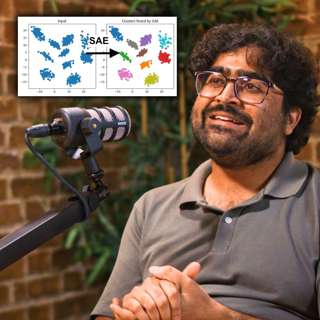
#222 – Can we tell if an AI is loyal by reading its mind? DeepMind's Neel Nanda (part 1)
We don’t know how AIs think or why they do what they do. Or at least, we don’t know much. That fact is only becoming more troubling as AIs grow more capable and appear on track to wield enormous cultural influence, directly advise on major government decisions, and even operate military equipment autonomously. We simply can’t tell what models, if any, should be trusted with such authority.Neel Nanda of Google DeepMind is one of the founding figures of the field of machine learning trying to fix this situation — mechanistic interpretability (or “mech interp”). The project has generated enormous hype, exploding from a handful of researchers five years ago to hundreds today — all working to make sense of the jumble of tens of thousands of numbers that frontier AIs use to process information and decide what to say or do.Full transcript, video, and links to learn more: https://80k.info/nn1Neel now has a warning for us: the most ambitious vision of mech interp he once dreamed of is probably dead. He doesn’t see a path to deeply and reliably understanding what AIs are thinking. The technical and practical barriers are simply too great to get us there in time, before competitive pressures push us to deploy human-level or superhuman AIs. Indeed, Neel argues no one approach will guarantee alignment, and our only choice is the “Swiss cheese” model of accident prevention, layering multiple safeguards on top of one another.But while mech interp won’t be a silver bullet for AI safety, it has nevertheless had some major successes and will be one of the best tools in our arsenal.For instance: by inspecting the neural activations in the middle of an AI’s thoughts, we can pick up many of the concepts the model is thinking about — from the Golden Gate Bridge, to refusing to answer a question, to the option of deceiving the user. While we can’t know all the thoughts a model is having all the time, picking up 90% of the concepts it is using 90% of the time should help us muddle through, so long as mech interp is paired with other techniques to fill in the gaps.This episode was recorded on July 17 and 21, 2025.Part 2 of the conversation is now available! https://80k.info/nn2What did you think? https://forms.gle/xKyUrGyYpYenp8N4AChapters:Cold open (00:00)Who's Neel Nanda? (01:02)How would mechanistic interpretability help with AGI (01:59)What's mech interp? (05:09)How Neel changed his take on mech interp (09:47)Top successes in interpretability (15:53)Probes can cheaply detect harmful intentions in AIs (20:06)In some ways we understand AIs better than human minds (26:49)Mech interp won't solve all our AI alignment problems (29:21)Why mech interp is the 'biology' of neural networks (38:07)Interpretability can't reliably find deceptive AI – nothing can (40:28)'Black box' interpretability — reading the chain of thought (49:39)'Self-preservation' isn't always what it seems (53:06)For how long can we trust the chain of thought (01:02:09)We could accidentally destroy chain of thought's usefulness (01:11:39)Models can tell when they're being tested and act differently (01:16:56)Top complaints about mech interp (01:23:50)Why everyone's excited about sparse autoencoders (SAEs) (01:37:52)Limitations of SAEs (01:47:16)SAEs performance on real-world tasks (01:54:49)Best arguments in favour of mech interp (02:08:10)Lessons from the hype around mech interp (02:12:03)Where mech interp will shine in coming years (02:17:50)Why focus on understanding over control (02:21:02)If AI models are conscious, will mech interp help us figure it out (02:24:09)Neel's new research philosophy (02:26:19)Who should join the mech interp field (02:38:31)Advice for getting started in mech interp (02:46:55)Keeping up to date with mech interp results (02:54:41)Who's hiring and where to work? (02:57:43)Host: Rob WiblinVideo editing: Simon Monsour, Luke Monsour, Dominic Armstrong, and Milo McGuireAudio engineering: Ben Cordell, Milo McGuire, Simon Monsour, and Dominic ArmstrongMusic: Ben CordellCamera operator: Jeremy ChevillotteCoordination, transcriptions, and web: Katy Moore
8 Sep 3h 1min
